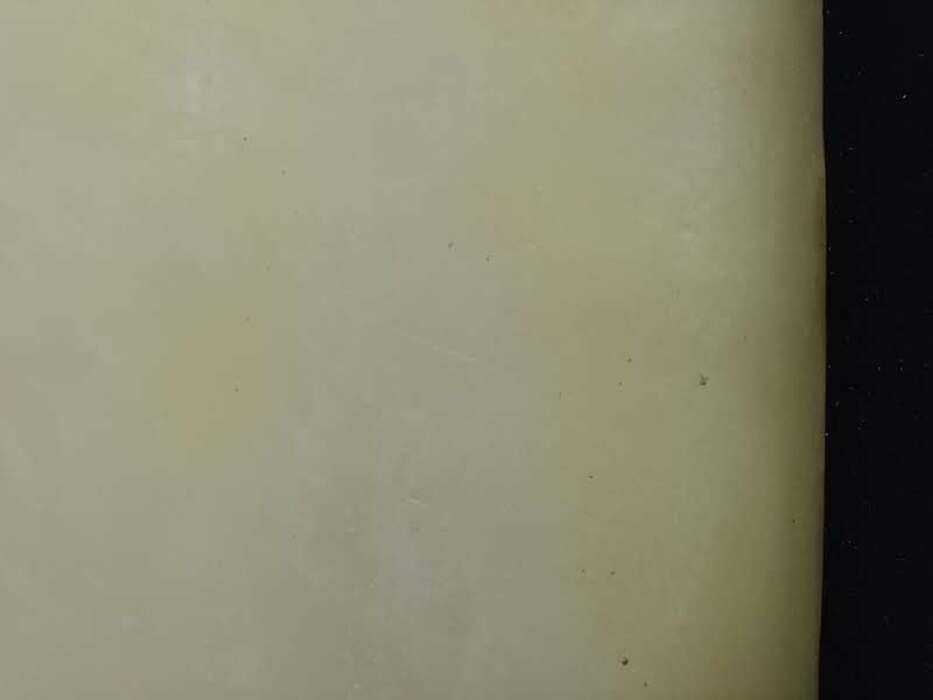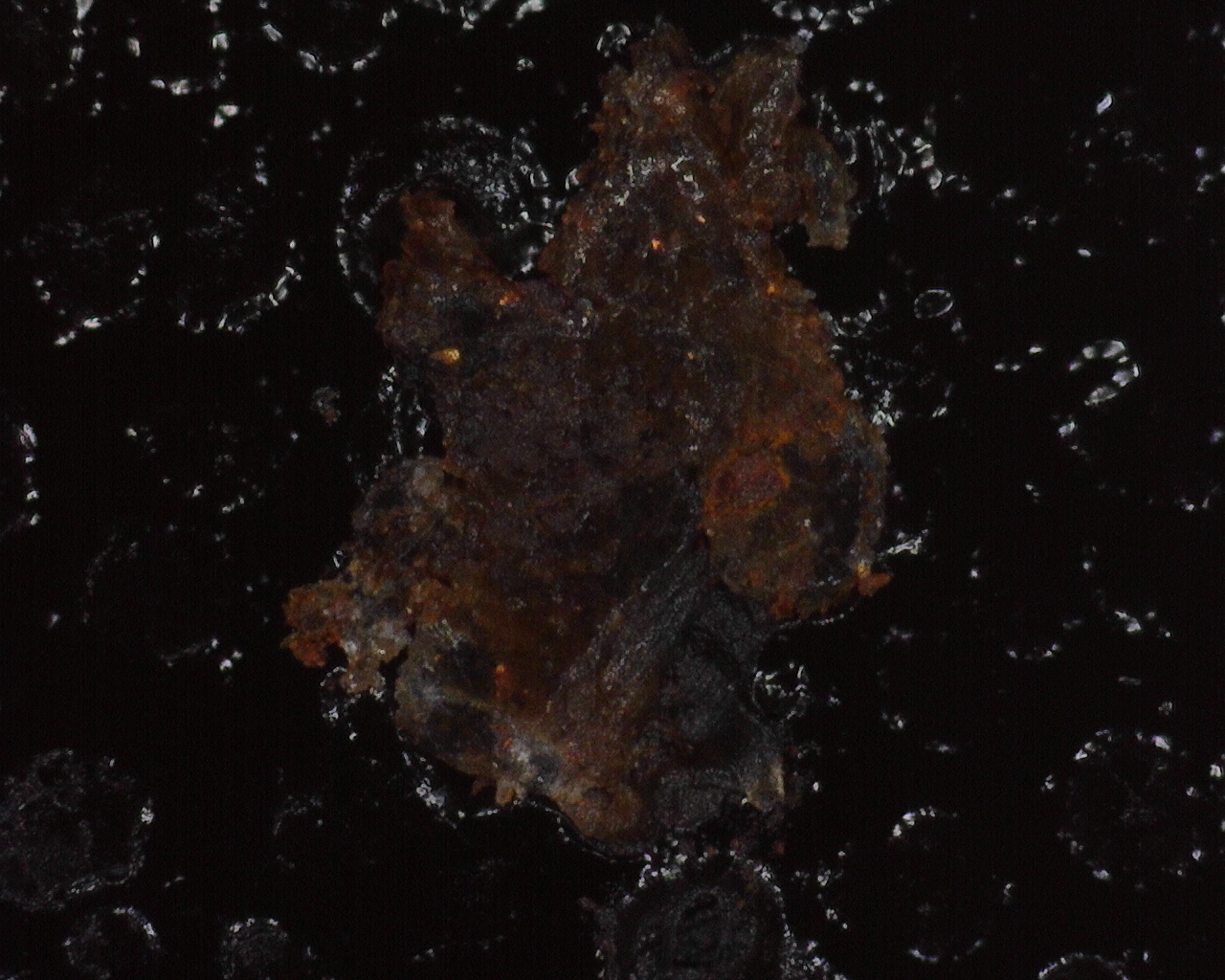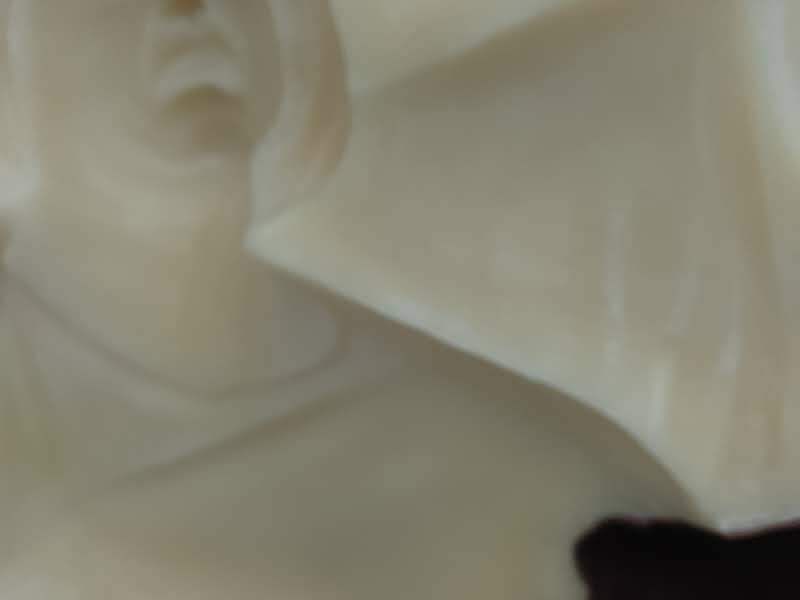Understanding the Yellowing of a Wax Sculpture: Scientific Study of a Contemporary Artwork
What was the context of the intervention on a monumental wax sculpture?
In June, OSE Services was called to intervene in the storage facilities of the Museum of Contemporary Art in Lyon to study a monumental wax sculpture (approx. 2.35 x 4 m), cast in the early 2000s. The artwork showed heterogeneous yellowing across its surface, particularly on raised areas and around the figures.
OSE Services was commissioned to identify the chemical nature of the wax, determine the origin of the yellowing, and propose adjustments to the formulation for future castings, with the aim of preventing the recurrence of this alteration.
How was the on-site investigation conducted?
An FTIR (Fourier-transform infrared spectroscopy) analysis was performed on-site on various areas of the sculpture. Targeted samples were then collected:
-
Reference zones: unyellowed wax (Sample I), polyurethane foam padding (Sample III), metallic alloy (Sample VI).
-
Altered zones: intense lemon-yellow areas (Samples II and VII), more diffuse yellowing (Samples IV and V).
These samples were then transferred to the laboratory for in-depth analysis (FTIR, GC-MS, SEM-EDX), along with a melting point determination of the wax.
What is the nature of the original wax?
Cross-analysis by FTIR and GC-MS confirmed that the wax is a medium-to-hard paraffin wax, composed mostly of linear n-alkane chains ranging from C19 to C37 (≈ 98%), with a lighter fraction of C12–C18 and approximately 0.2% BHT (Butylated HydroxyToluene), a common industrial antioxidant.
While this type of wax is chemically stable, it can undergo slow oxidative aging, which manifests as a dull yellow veil on the surface after prolonged exposure to light and oxygen.
What causes the bright “lemon-yellow” discoloration?
This is where the analysis revealed an unexpected result. The “lemon-yellow” zones differ significantly from areas showing general aging:
-
The FTIR spectra of these zones showed amide I (1660 cm⁻¹) and amide II (1625 cm⁻¹) peaks, absent in healthy wax.
-
A cis-unsaturation signal (~965 cm⁻¹) and partial solubility in acetone indicated the presence of a migrated conjugated amide on the surface.
What is the origin of this yellow amide?
Comparative analysis with the polyurethane foam used for padding revealed the same spectral signature. The most likely explanation is the migration of a technical mold-release agent—such as erucylamide, an oxidized derivative of a fatty amide—or aromatic residues from the MDI-based PUR foam (methylene diphenyl diisocyanate).
This contamination either reacted or oxidized on the surface, forming a stable chromophore responsible for the bright yellow coloration, which is partially extractable and spectroscopically detectable.
What are the implications for conservation and future creation?
The study shows that the original material (refined paraffin wax) remains stable and suitable for use. However, technical materials such as molds, foams, or additives can, even over time, introduce migratory and reactive compounds that alter the visual aspect of the work.
Several recommendations were made:
-
Use neutral, inert storage materials, free from migratory additives.
-
Adapt wax formulations for future castings to reduce potential interactions with molds and padding.
-
Systematically screen additives in adjacent components (PUR foams, resins, silicone molds, etc.).
-
Incorporate accelerated aging tests (UV, humidity) into best practices for evaluating new formulations.
Why work with a laboratory specialized in heritage materials?
The alterations observed in this artwork highlight the critical importance of art conservation laboratories with expertise in applied chemistry, materials science, and spectroscopy:
-
Chemical analysis of wax or paint;
-
Identification of migratory contaminants;
-
Formulation studies for casting materials;
-
FTIR, GC-MS, and SEM-EDX analysis tailored to heritage preservation;
-
On-site diagnostics and micro-sampling with minimal impact.
What services does OSE Services offer in the study of artworks?
OSE Art is a specialized division of OSE Services dedicated to the study and conservation of artworks. It offers:
-
An on-site laboratory for artwork analysis;
-
Engineers specializing in chemical analysis of paintings and sculpture materials;
-
Complete formulation studies, such as this case involving wax, wax alteration, and polyurethane migration;
-
FTIR on-site analysis with a proprietary database of over 25,000 reference spectra;
-
Research on the aging behavior of contemporary materials;
-
Advanced studies in the conservation-restoration of modern and contemporary art.
In conclusion: science in service of memory
The study of Veillée funèbre au Kosovo illustrates the complexity of chemical interactions in contemporary artworks. OSE Services identified a non-intrinsic cause for the intense yellowing, demonstrating the impact that peripheral elements—like polyurethane foam—can have on the long-term appearance of a sculpture.
This research not only helps refine conservation strategies, but also guides artists in selecting materials for future creations. With a foundation of rigorous analysis, technical expertise, and respect for artistic intent, OSE Services continues to bridge science and heritage.


